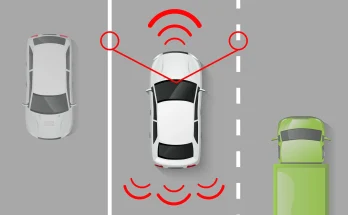JAKARTA, cssmayo.com – In an era where downtime equates to lost revenue and frustrated users, IT Optimization has become indispensable. Whether you manage a small office network or oversee enterprise-grade infrastructure, enhancing system performance with simple fixes can dramatically improve efficiency and reliability. This article explores why IT Optimization matters, highlights core areas to focus on, and provides straightforward yet powerful techniques you can apply today.
Why IT Optimization Matters

Improved System Performance
Efficient systems process tasks faster, reducing wait times and ensuring critical applications respond promptly. By prioritizing IT Optimization, organizations can achieve smoother operations, faster data access, and overall improved productivity.
Cost Savings
Sluggish systems often require costly hardware overhauls or additional licensing fees. With targeted optimization—such as fine-tuning configurations and removing unnecessary services—you can extend the lifespan of existing assets and defer major capital expenditures.
Enhanced User Satisfaction
Employees and customers alike demand responsive systems. When IT Optimization reduces latency and minimizes errors, end users experience fewer disruptions, boosting satisfaction, morale, and retention.
Core Areas of IT Optimization
Hardware Configuration
Memory Upgrades
Adding RAM is one of the simplest IT Optimization fixes. More memory allows applications to cache data efficiently, reducing disk I/O and speeding up multitasking.
Storage Tuning
Switching from HDD to SSD or implementing RAID configurations can significantly improve read/write speeds. Defining appropriate block sizes and enabling TRIM on SSDs ensures sustained performance over time.
Software Optimization
Operating System Tweaks
Disabling superfluous services, adjusting virtual memory settings, and optimizing registry entries can streamline the OS. Regular patching and driver updates also maintain stability and performance.
Application Settings
Many enterprise and consumer applications offer performance modes or resource limits. Fine-tuning thread counts, cache sizes, and concurrency settings aligns software behavior with your hardware capabilities, enhancing overall IT Optimization.
Network Performance
Bandwidth Management
Implement Quality of Service (QoS) policies to prioritize critical traffic—VoIP calls, ERP systems, or customer portals—over less urgent data transfers. Proper QoS is a cornerstone of network-level IT Optimization.
Latency Reduction
Optimizing routing tables, minimizing network hops, and leveraging edge caching solutions help cut latency. Regularly reviewing firewall and VPN settings prevents unnecessary packet inspection delays.
Simple Fixes That Work
Regular System Updates
Keeping operating systems, firmware, and applications up to date patches vulnerabilities and introduces performance improvements. Automate updates where possible, but review release notes to avoid unexpected compatibility issues.
Disk Cleanup and Defragmentation
Removing temporary files, clearing cache directories, and uninstalling unused applications frees up valuable disk space. On HDD-based systems, schedule defragmentation to reorganize scattered files, speeding up read/write operations.
Optimizing Startup Processes
Many applications auto-launch at boot, consuming memory and processor cycles. Use built-in startup managers (e.g., Windows Task Manager) or lightweight third-party tools to disable nonessential programs. This single IT Optimization step enhances boot times and reduces background load.
Cache Management
Web browsers, databases, and system services rely on caching to accelerate repeated data retrieval. Periodically clearing stale caches and adjusting cache allocation strikes the right balance between hit rate and memory usage.
Resource Monitoring and Alerts
Implement real-time monitoring tools (such as Nagios, Zabbix, or built-in OS utilities) to track CPU, memory, disk, and network metrics. Configure alerts for threshold breaches to proactively address performance bottlenecks before they impact operations.
Best Practices for Sustained Performance
Automated Maintenance
Schedule routine tasks—disk cleanup, defragmentation, log rotation, and update checks—to run during off-peak hours. Automation reduces manual overhead and ensures consistent IT Optimization efforts.
Performance Testing
Before and after any optimization, conduct baseline and follow-up tests using benchmarking tools like Geekbench, PassMark, or iperf. Quantifying improvements validates your approach and helps refine future tweaks.
Documentation and Standardization
Maintain clear documentation of optimization procedures, configuration changes, and monitoring thresholds. Standardized processes facilitate knowledge sharing across IT teams and ensure repeatable success in diverse environments.
Real-World Examples
Case Study: Small Business Server
A local law firm struggled with slow file sharing and nightly backup windows that extended into business hours. By upgrading to SSD storage, disabling unused services, and implementing daily automatic defragmentation, the firm reduced backup time by 60% and accelerated document access by 40%.
Case Study: Enterprise Workstations
A manufacturing company’s engineering department experienced frequent application freezes due to high memory demands. After analyzing resource usage, IT deployed additional RAM, fine-tuned application cache settings, and disabled nonessential startup programs. The result: a 35% reduction in helpdesk tickets related to performance issues.
Conclusion
Effective IT Optimization doesn’t always require massive overhauls or expensive hardware. By focusing on targeted tweaks—system updates, disk maintenance, startup management, and proactive monitoring—you can achieve substantial performance gains. Coupled with best practices like automated maintenance, rigorous testing, and clear documentation, these simple fixes empower IT teams to deliver reliable, responsive systems that meet today’s demanding standards.
Elevate Your Competence: Uncover Our Insights on Techno
Read Our Most Recent Article About Cyber Defense!




